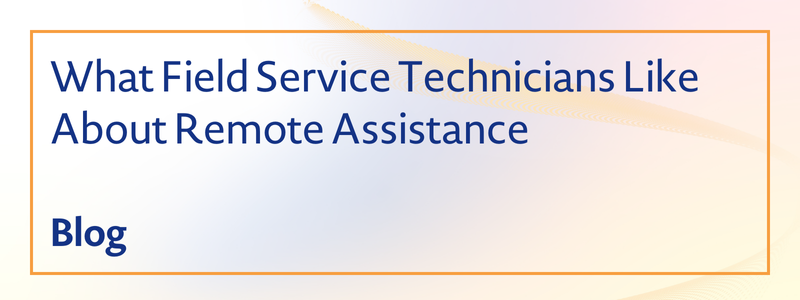What Field Service Technicians Like About Remote Assistance

What Field Service Technicians Like About Remote Assistance

Remote assistance was just one of the many technologies field service technicians encountered during organizations' digital transformations over the past several years. Some field service organizations felt that adopting remote assistance tools was a no-brainer—it was affordable, could make technicians' lives easier, and could improve the customer experience in the process.
Nonetheless, like any technology, remote assistance must be accepted by users before it can be put to the test. While some technicians were initially reluctant to engage with the technology, many have realized that it can provide a significant number of benefits in their day-to-day work.
Here are a few of the aspects of remote assistance that field service technicians have found particularly appealing.
Learning While in the Field
Like other industries, field service is struggling with an aging workforce. Multiple reports over the past few years have revealed that skilled trade positions, as well as those of technicians and engineers, are some of the hardest to fill.
Field service organizations are taking every measure possible to retain their institutional knowledge, which is increasingly residing within their veteran employees. They are also searching for ways to transfer that knowledge to new technicians. Remote assistance has a role to play in this regard.
Veteran technicians can't be everywhere at once to train new employees, but they can connect with new employees remotely to help them while they are in the field. Remote assistance tools allow a novice technician to contact a veteran from anywhere, at any time. Using augmented reality, the veteran can use intuitive instructions to help the novice complete tasks in real-time.
More Optimal Service Results
First-time fix rates are no longer a standard to strive for in the field service industry; they are the expectation. Customers who aren't satisfied that their problems are solved the first time may be upset about the results of the service, and field technicians are often the front-line employees who must manage such customer expectations.
Remote assistance enables the technician to reach out for help to ensure the job is done right the first time. When combined with IoT data and analytics solutions, technicians can enter a worksite armed with numerous capabilities to get the job right the first time, and quickly.
Zero-Touch and Self-Service Opportunities
"Remote work" became a buzzword in 2020, in no small part due to the COVID-19 pandemic. When news of the virus first began to spread, it became unsafe for many field service technicians to go on-site to deliver services.
As a result of the pandemic, 75% of consumers said they did not want technicians in or around their homes unless strictly necessary. This resulted in a conundrum for many field service operations, as in-person service was at the core of their operations. Thankfully, remote assistance technology offered technicians a way to provide services to customers while reducing the risk of exposure.
Through remote assistance, customers could engage in guided self-service by connecting with a company through a smartphone app or another user-friendly channel. In this way, a technician could walk them through a service procedure safely and effectively.
Although this scenario may not be ideal in every circumstance, it became an important working model during the pandemic. Many customers also prefer this mode of service. As such, companies would do well to include zero-touch remote service as part of their service packages moving forward.
Solutions That Work on a Smartphone
Most employees aren't thrilled at the prospect of having to learn new technology, especially if it is complex and difficult to understand. One of the key benefits of many of the remote assistance tools currently on the market is that they are designed to be user-friendly. Many operate directly through a technician's smartphone.
This makes the technology much more accessible and easier to adopt. Instead of having to learn a new system, technicians can rely on intuitive smartphone applications to get the capabilities they need.
Don't Miss Field Service Palm Springs 2021
Field service organizations have adopted remote assistance programs across industries. Many are seeing significant business benefits, from reduced costs to easier training exercises. Nonetheless, it's field service technicians themselves that will use the technology most, so every organization needs to survey their technicians' opinions on what technology to use and how it should be deployed.
Remote assistance is sure to be a hot topic at the next Field Service conference event, happening at the JW Marriott in Palm Springs, California from November 16th to 18th, 2021. Download the agenda today to learn more.